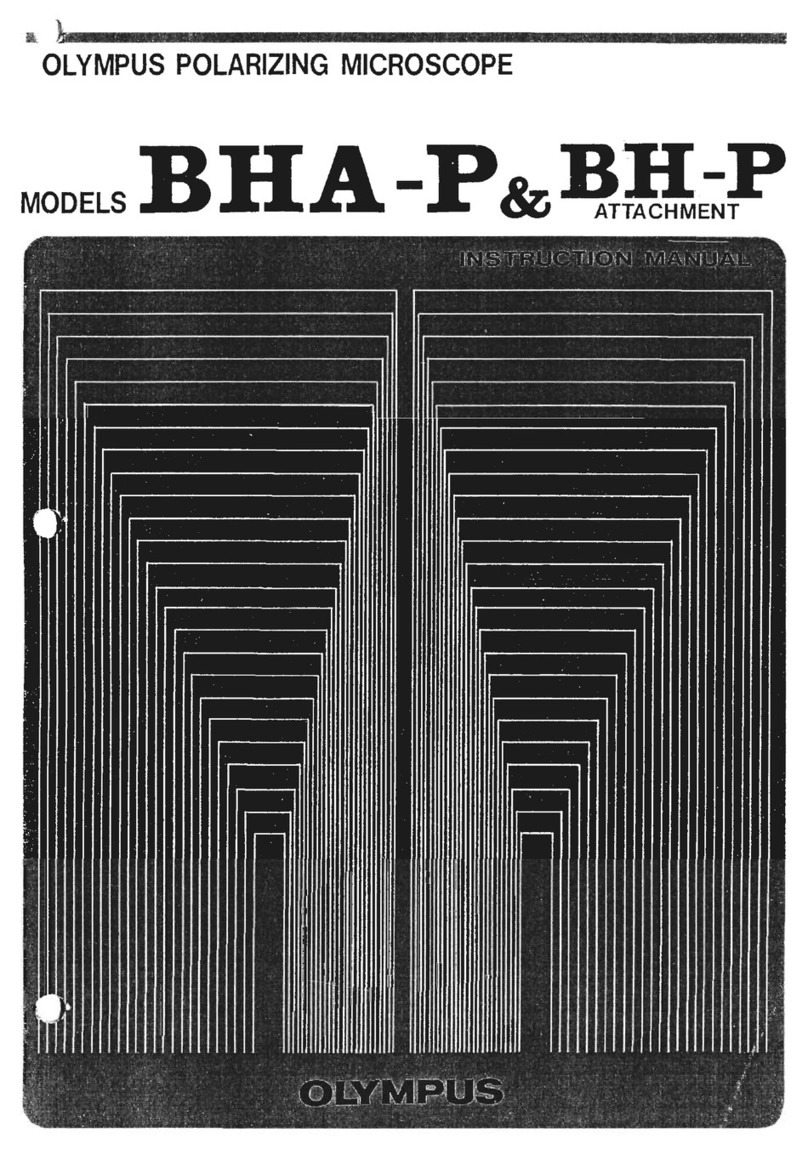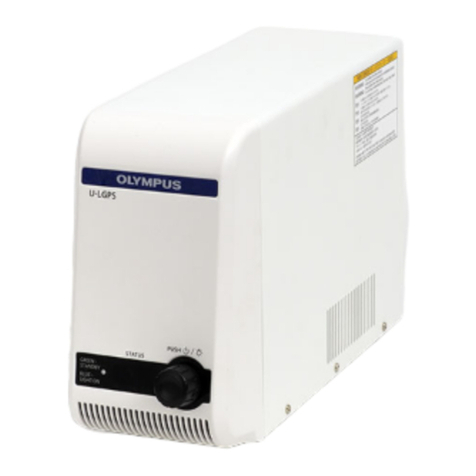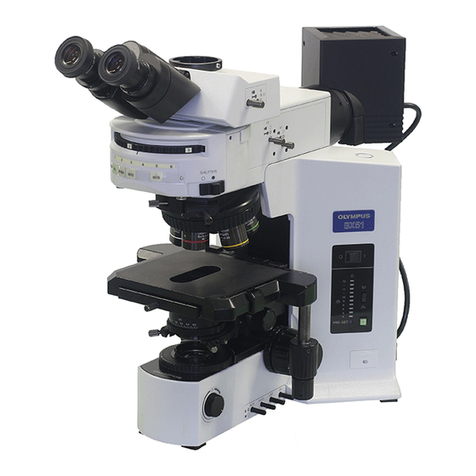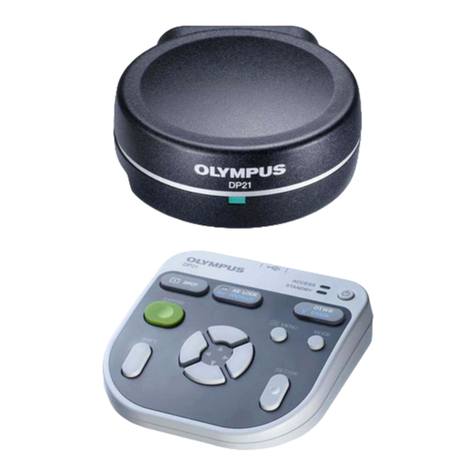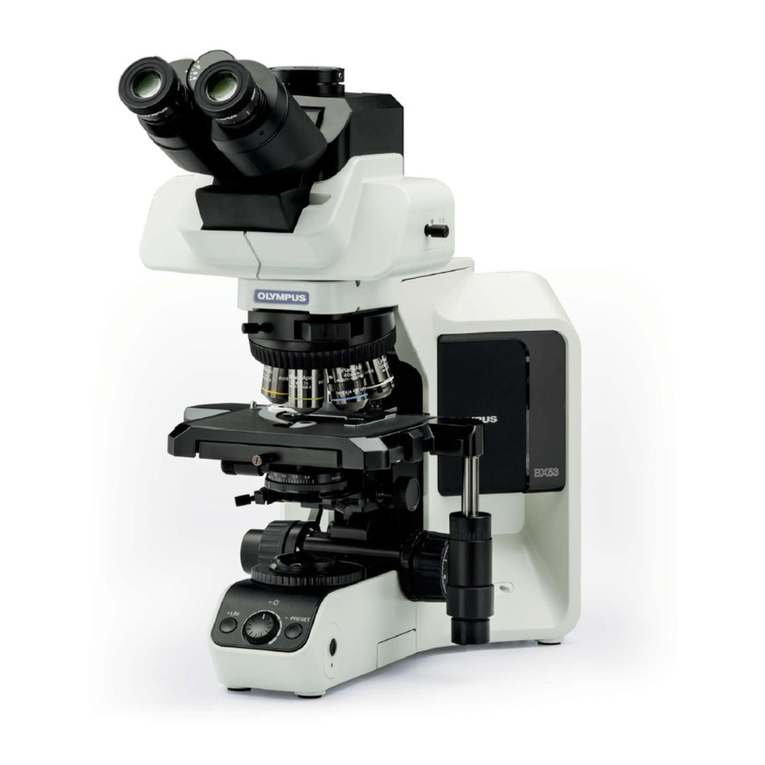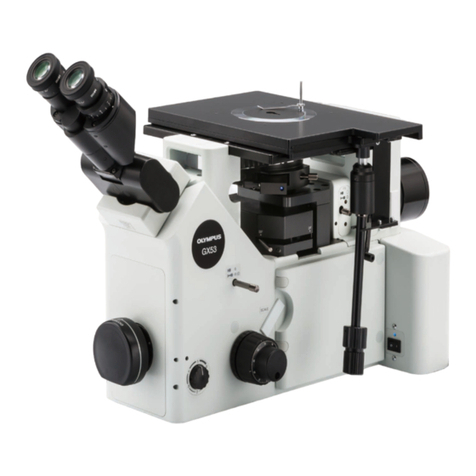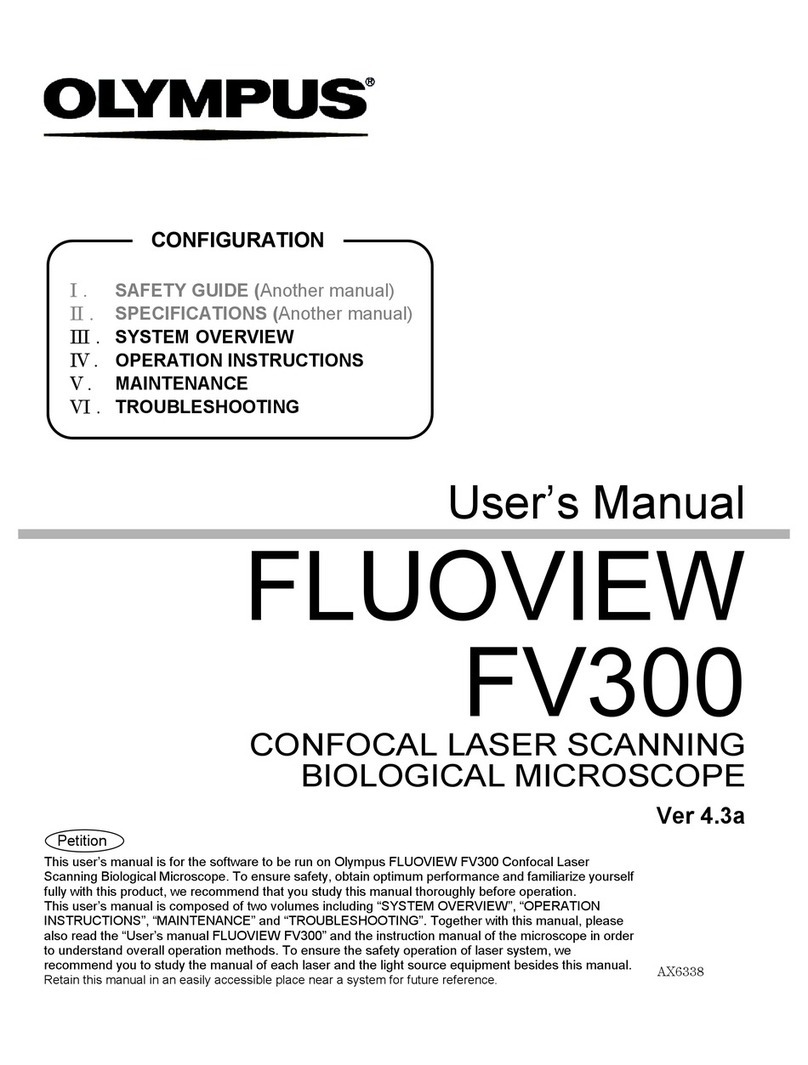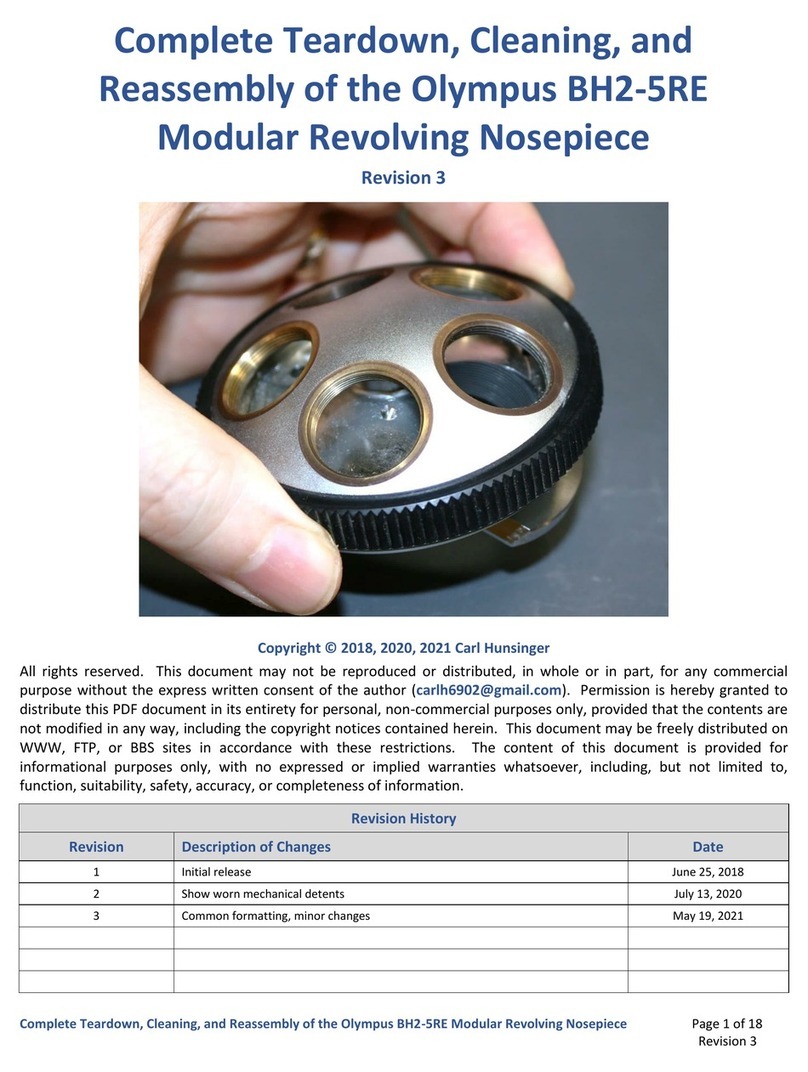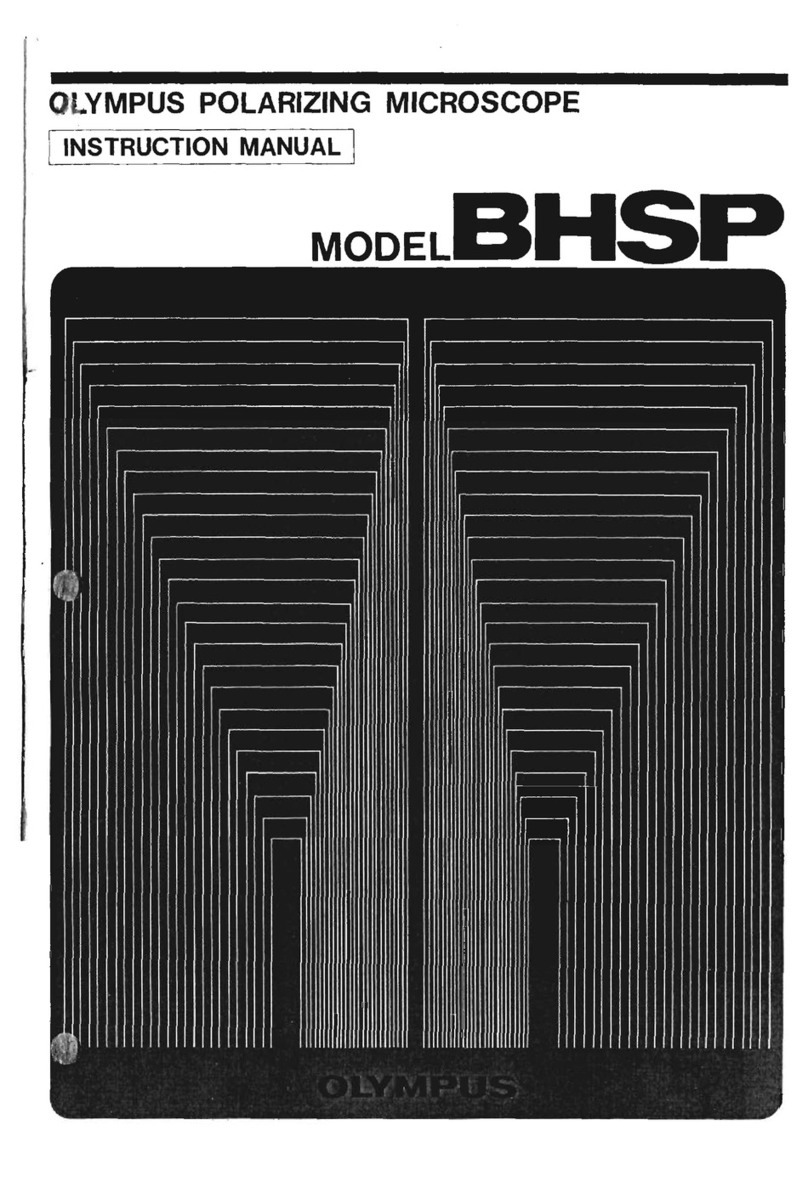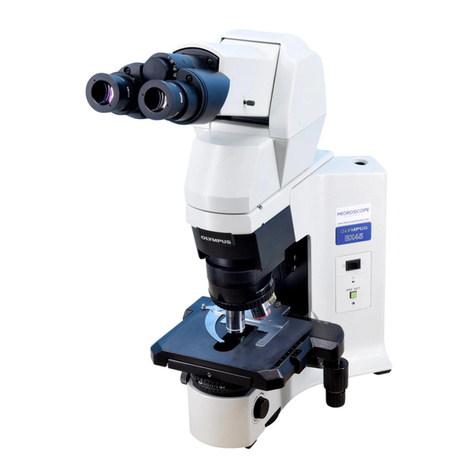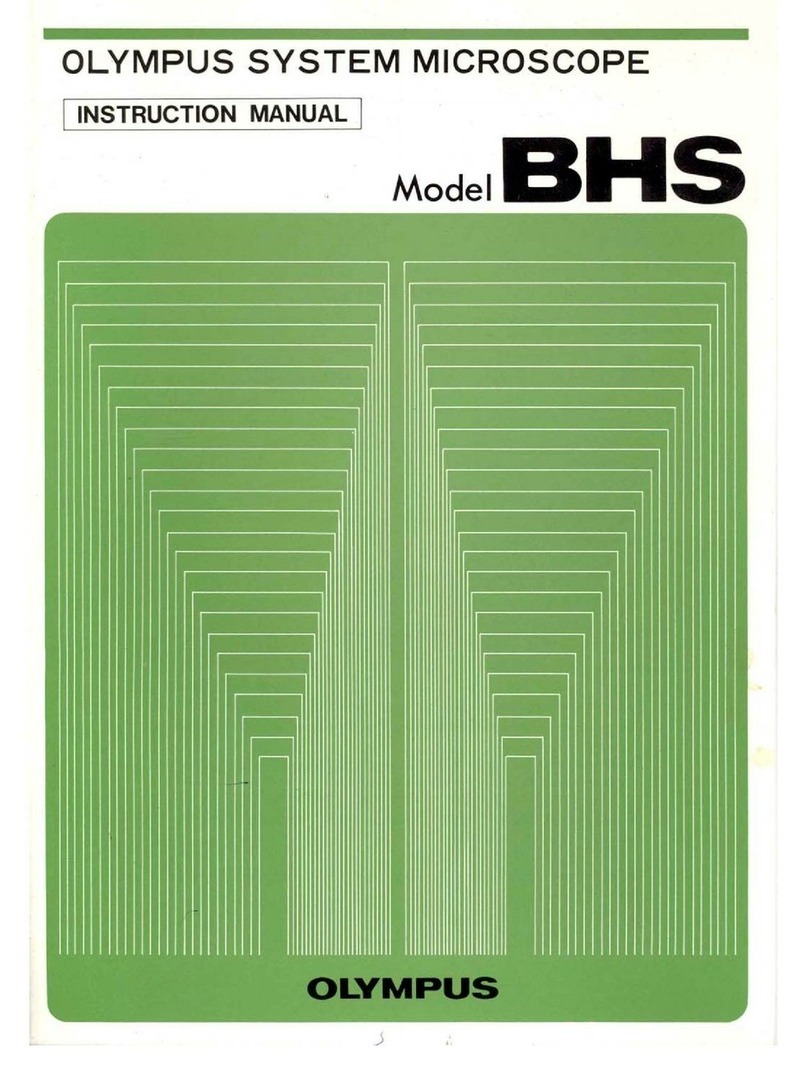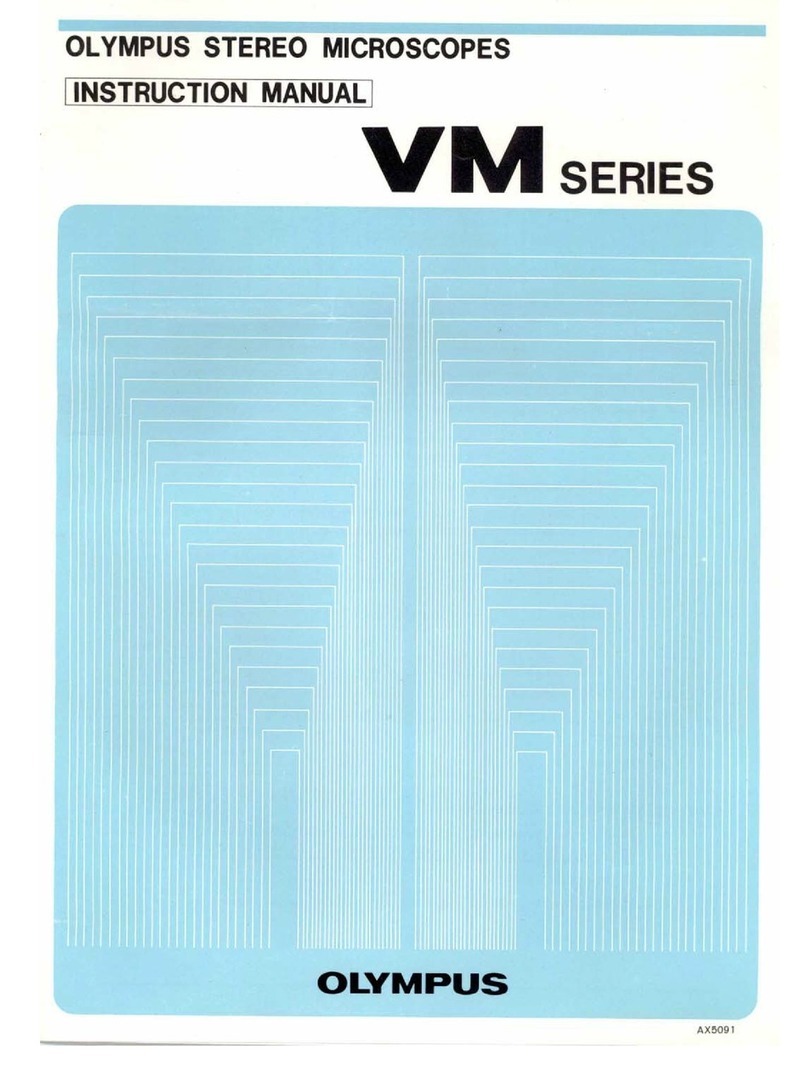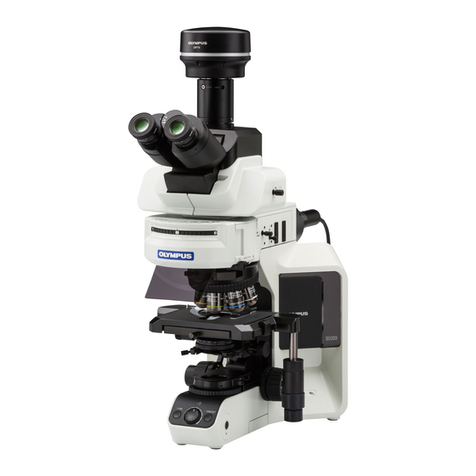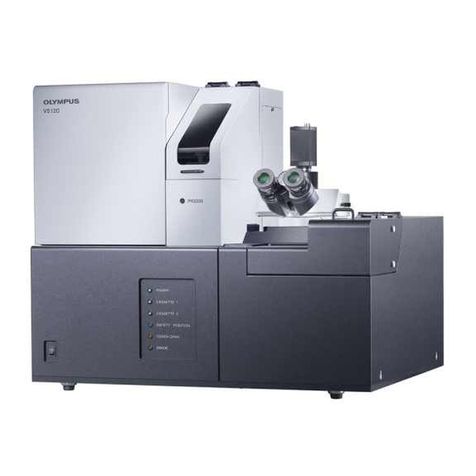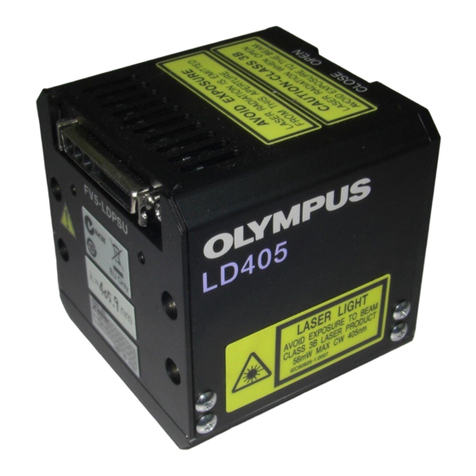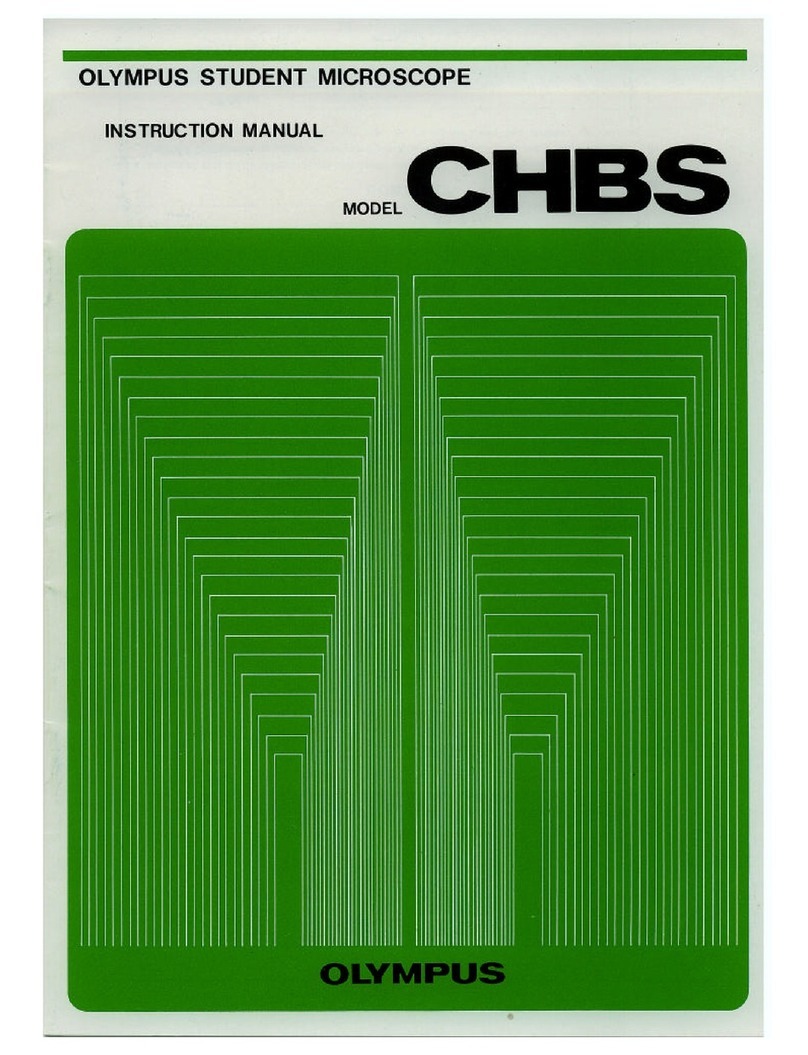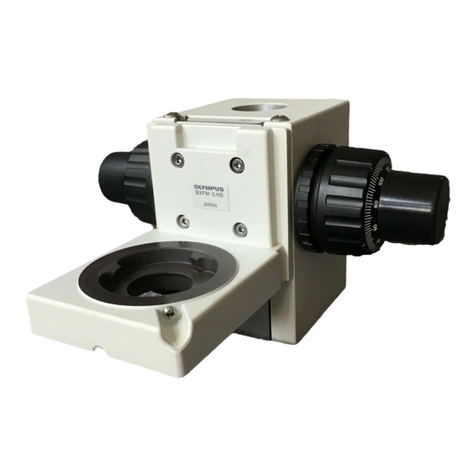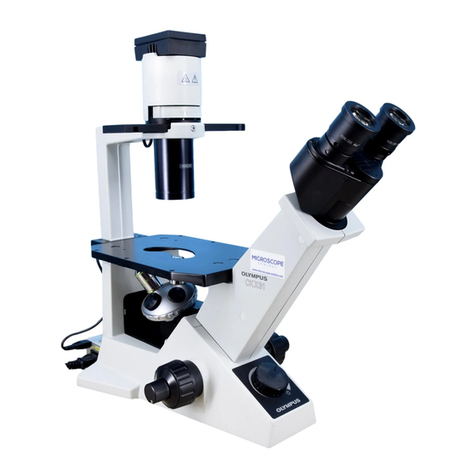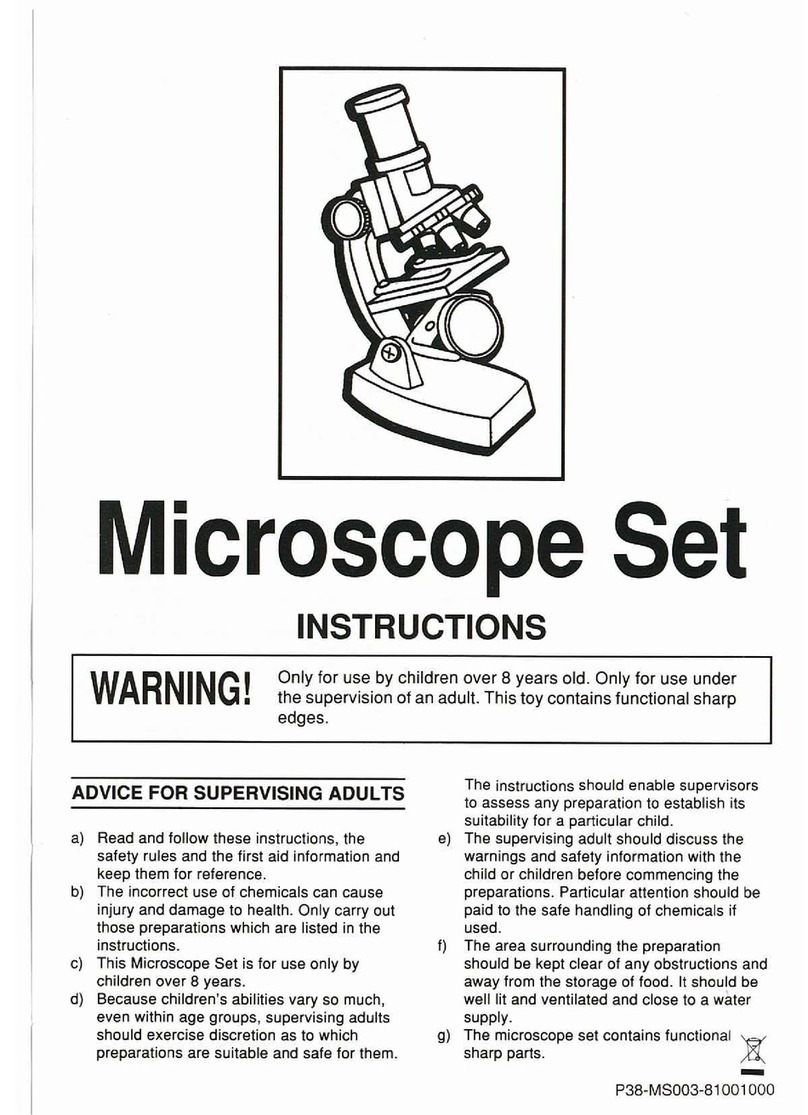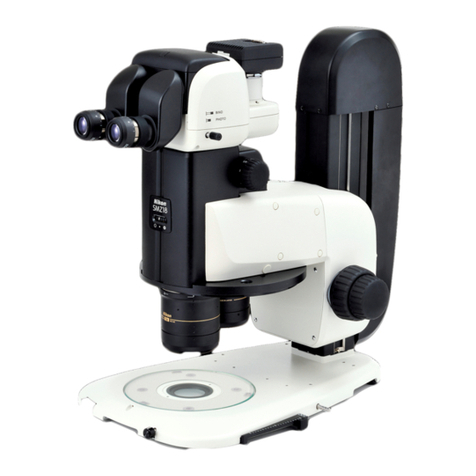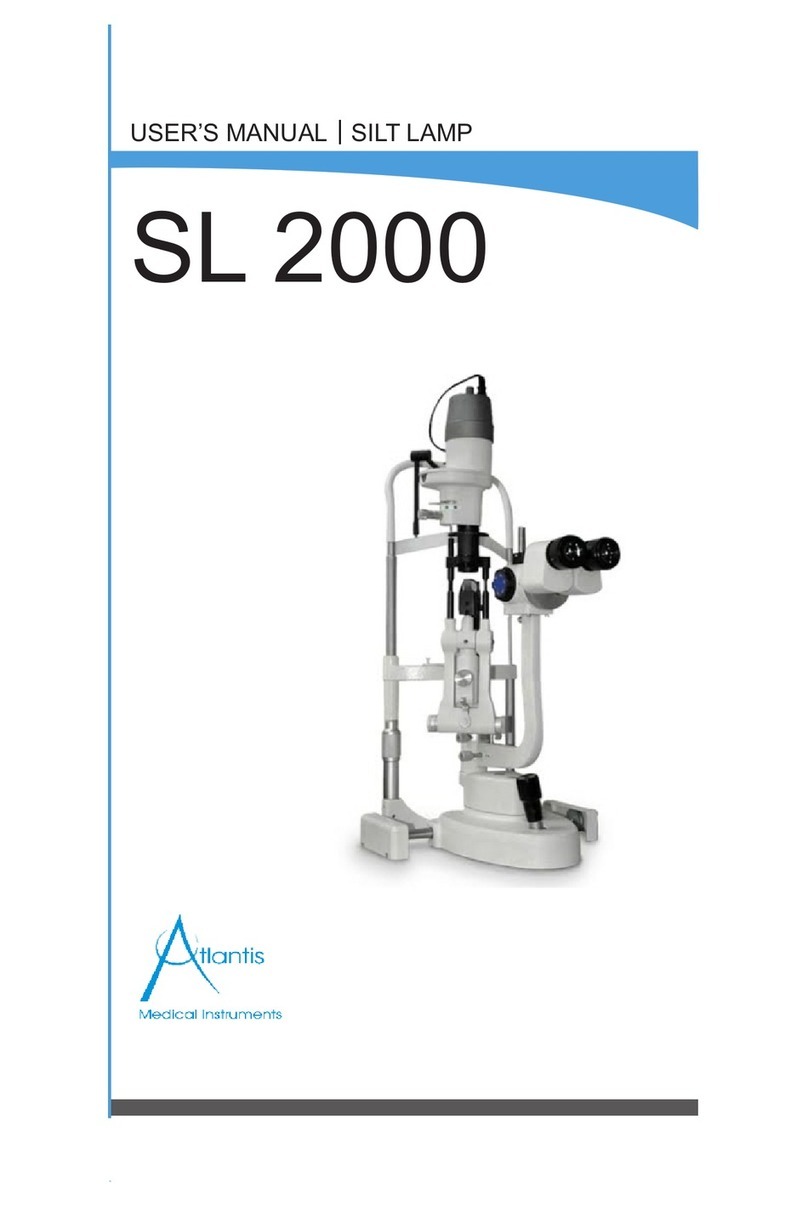
C 0 N T E N T S
A.
SEQUENTIAL
PROCEDURE
OF
DISASSEMBLY
••••••••••••••••••••••••••••••••••••••••
2
1.
Disassembly
of
Focusing
Mechanism • • • •• •. • • . • • •• • • .
•••.•••.•••.•••
2
2.
Disassembly
of
Main Body and Lens
Drum
•••••••••••
•••••••••••••.•••.••
2
3.
Disassembly
of
Objective
Mount •• •• •• . • . •• •
•.••.•.•.•••.•.•••.••••.•••••
4
4.
Disassembly
of
Prism
Mount
.••..............................•...••...•.....
4
5.
Disassembly
of
Trinocular
Tube
••••••••••••••••••·•••••••••••••••••••••••••
6
B.
SEQUENTIAL
PROCEDURE
OF
OPTICAL
ADJUSTMENTS
..••••••••••••••••••••••••••••.••
8
1.
Tools
and
Test
Plate
•...•...................•..••..•....•..•••..••..•
• • • • • 8
2.
Porro-prism
Cent
ration
.•.•••••..............•....•..•..•.•....••.•.•.
• • • • • 8
3.
Adjustment
of
Click
Spring
•••.•.••••••••••.••.••••••••••••••.••••••
• • •• • •
•10
4.
Focusing
of
Drum
Lenses
in
the
Right
Field
of
View
••••••••·•••••••••••••••11
5.
Centration
of
Drum
Lenses
in
the
Right
Field
of
View
•••••••••••·•••·••••••12
6.
Adjustment
of
Left"
Diopter
••••••••••••••••••••.•••••.•••••••••..••••
• ·
••
••15
7.
Centration
and
Focusing
of
Drum
Lenses
in
the
Left
Field
of
View
••••••••••16
8.
Attachment
of
Dust
Glass
•••••••••••••••••••·•••••••••••••••·••••••••••••••17
9.
Coincidence
of
Right
and
Left
Optical
Axes
•••···•·················••••·•••17
10.
Mounting
of
PM-6
••.•••...•.•••...••••..•.•..•.••••••..•••..••.•
• •
•••
• • • • •
•18
11.
Focusing
of
Phototube
Objectives
••·········••••••••••••••••••••·••••••••••18
12.
Centration
of
Drum
Lenses
for
Phototube
•••••••••••••••••••••••••••••••••••19
13.
Coincidence
of
Optical
Axes
through
Phototube
and
Binocular
Tube
•••••·····19
14.
Mounting
of
Dust
Glass
and Covers
••••••••••··············•••••••••••••••••20
C.
PRACTICAL
POINTS
OF
REPAIRS
•.••••••••••••••••••••••••••••••••••••••••••••••
21
1.
Sticking
on
Abrasive
Surfaces
of
Focusing
Mechanism
••.•••••••.••••••••••••
21
2.
Chatter
on
Abrasive
Surfaces
of
Focusing
Mechanism
••••••••••••••.•••••••••
22
3.
Defective
Rack
and
Pinion
of
Focusing
Mechanism
•••••••••••••••••••••••••••23
4.
Heavy
Rotation
of
Focusing
Knob
...•••.••••••••..•••••••.••••••••••••
26
5.
Heavy
Rotation
of
Helicoid
Rings
•••
·•••···········••••••••••••••••••••••26
6.
Defective
Binocular
Vision
••••••••.••••...••••••••.•••••••••••••••••••••••
28
- 1 -
